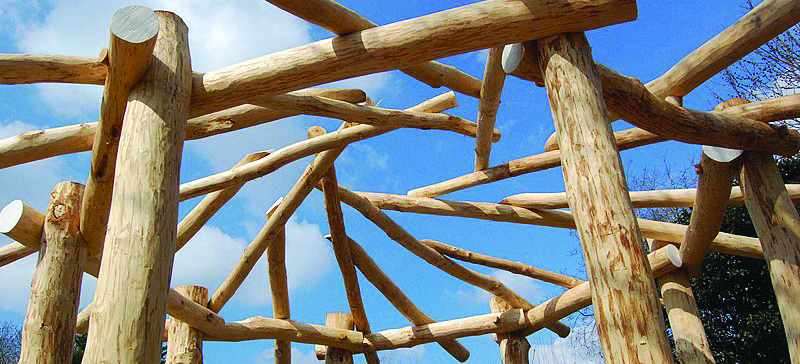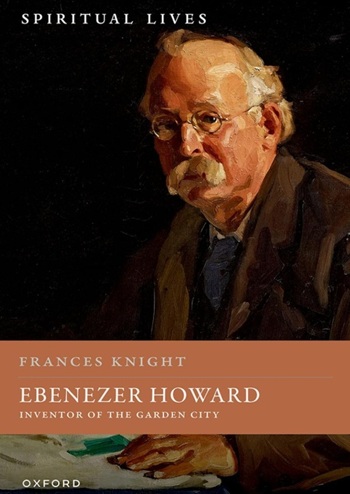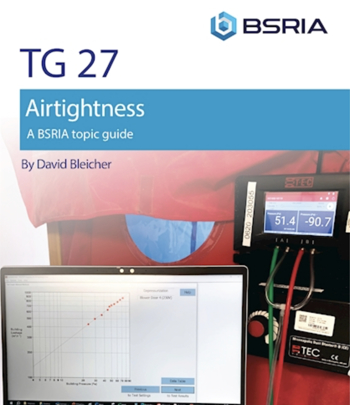Reciprocal roof
Contents |
[edit] What constitutes a reciprocal roof ?
A reciprocal roof, reciprocal grid or reciprocal frame is generally considered to be a structure that can be self supporting, or where individual members reciprocate support to neighbouring members through their interlinking. There are a wide variety of structures that might be considered as reciprocating, in that the individual members interlink and support one another, however they can vary in how much they support one another, aswell as in the way they are construction. (image Adrian Leaman under CC)
[edit] Spiral reciprocal roof
A spiral reciprocal roof which might also be referred to as a Mandala roof, and is entirely self supporting, the details of the name and structure are less clear but indication is it has origins in Japan and China as early as the 12th Centrury. Examples of how this simple spiral reciprocal structure can be made using varying numbers of long sticks, above 3, laid in an interlinking form, is illustrated below by Peter Eastern. (licensed under the Creative Commons Attribution 3.0 Unported)
In general the structures need temporary support of the first stick (or beam) until the final piece is laid and interlinked to the previous thus locking the structure in place. Whilst it is clear that early humans made many version of the round house, it is not clear how many involved a reciprocal roof, though the structure fits well with the use of round wood timber which is likely to have been commonly used.
Larger examples of what might be called reciprocating frames with circular form structures are geodesic domes and gridshells, although these may also considered separate as they act differently to the reciprocal structures described above.
[edit] Orthogonal reciprocal roof
An orthogonal reciprocal frame uses the same priinciples as spiral frame, merely in a different form and usually with 4 interlinking memebers as is illustrated below also by Peter Eastern. (licensed under the Creative Commons Attribution 3.0 Unported)
amella structures will be made up of elements which are twice the length of each grid unit, so that the next member is supported at the midpoint of the previous. This type of structure allows each member to be made up of relatively thin two dimensional linear beams or plates, in more complex structures these might be cut into certain shapes that interlink or slot together creating three dimensional structures or gridshells.
[edit] Other reciprocal structures
Other curved forms which might be considered as reciprocating are examples such as the Zollinger roof. In this structure smaller elements are interconnected to create a larger structure, the reciprocation here occurs where the individual elements are twice the length of the diagonal grid unit over the structure, the adjacent members are supported at the midpoint of the previous members, thus the grid and the structural memebers, follow slightly different patterns, these interlinking connections at the mid points create a reciprocating structure. See image below with detail of the underside of the aircraft hangar at former Airbase Neubiberg near Munich, which uses Zollinger"-roof (image Ulwald CC). The single beams spanning two grids and connecting to the centre of the next can clearly be seen.
[edit] Related articles on Designing Buildings
- Braced frame.
- Bridge construction.
- Balloon framing.
- Concrete frame.
- Domestic roofs.
- Gridshell.
- Gusset.
- Hammerbeam roof.
- Lamella board.
- Lamella structure.
- Long span roof.
- Pitched roof.
- Portal frame.
- Purlins.
- Sheathing.
- Space frame.
- Structural steelwork.
- Skeleton frame.
- Steel frame.
- Strut.
- Ties.
- Timber engineered structural frames.
- Timber gridshell.
- Timber roof.
- Timber framed buildings and fire.
- Timber post and beam construction.
- Timber preservation.
- Types of frame.
- Types of timber.
- Types of roof.
- Types of structural load.
Featured articles and news
A change to adoptive architecture
Effects of global weather warming on architectural detailing, material choice and human interaction.
How big is the problem and what can we do to mitigate the effects?
Overheating guidance and tools for building designers
A number of cool guides to help with the heat.
The UK's Modern Industrial Strategy: A 10 year plan
Previous consultation criticism, current key elements and general support with some persisting reservations.
Building Safety Regulator reforms
New roles, new staff and a new fast track service pave the way for a single construction regulator.
Architectural Technologist CPDs and Communications
CIAT CPD… and how you can do it!
Cooling centres and cool spaces
Managing extreme heat in cities by directing the public to places for heat stress relief and water sources.
Winter gardens: A brief history and warm variations
Extending the season with glass in different forms and terms.
Restoring Great Yarmouth's Winter Gardens
Transforming one of the least sustainable constructions imaginable.
Construction Skills Mission Board launch sector drive
Newly formed government and industry collaboration set strategy for recruiting an additional 100,000 construction workers a year.
New Architects Code comes into effect in September 2025
ARB Architects Code of Conduct and Practice available with ongoing consultation regarding guidance.
Welsh Skills Body (Medr) launches ambitious plan
The new skills body brings together funding and regulation of tertiary education and research for the devolved nation.
Paul Gandy FCIOB announced as next CIOB President
Former Tilbury Douglas CEO takes helm.
UK Infrastructure: A 10 Year Strategy. In brief with reactions
With the National Infrastructure and Service Transformation Authority (NISTA).
Ebenezer Howard: inventor of the garden city. Book review.
Airtightness Topic Guide BSRIA TG 27/2025
Explaining the basics of airtightness, what it is, why it's important, when it's required and how it's carried out.

























